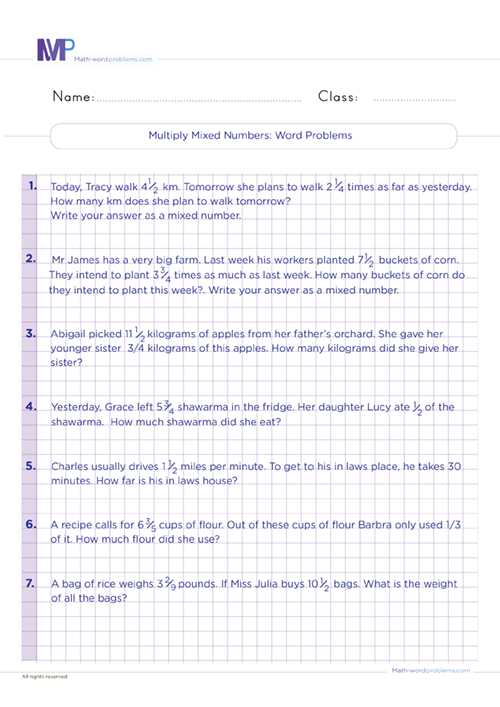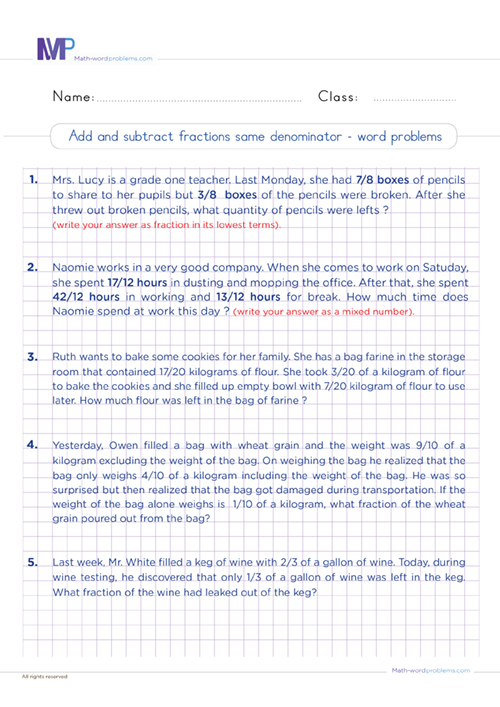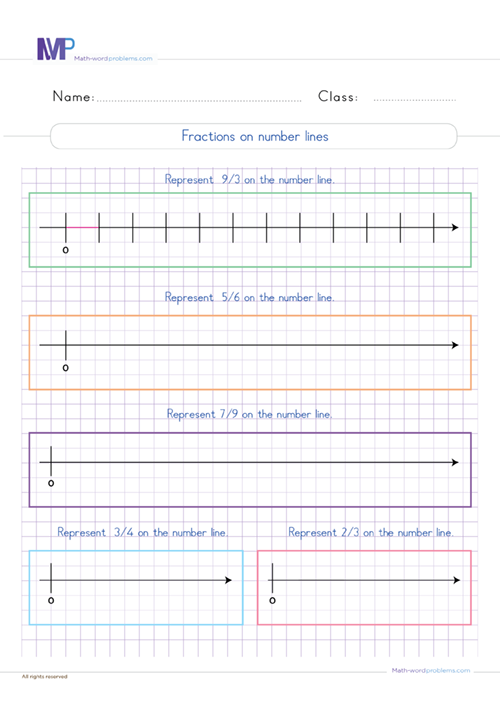 How to multiply mixed numbers word problems
How to multiply mixed numbers word problems
Do you know how to multiply mixed numbers word problems? If not, Then here is a step-by-step guide that will provide a great solution to your worries.
Before multiplying mixed numbers word problems, you need to translate phrases into a maths expression by identifying keywords that indicate multiplication.
While figuring out these keywords, we will emphasize the importance of creating a complete mental representation of the problem before they start solving it. This is because sometimes the same keyword has different meanings in different word problems.
However, our well-organized step-by-step guide will take you through the best way of solving complex grade six mixed numbers word problems involving multiplication.
Steps to solve multiplication of mixed numbers word problems
These straightforward steps to solve multiplication of mixed numbers word problems lay great emphasis on conceptual understanding of the problem structure for sixth graders to become successful math word problem solvers.
Also, these steps are so reasonable that transforming word problems into mathematical statements will be an easy task for your kids. To see how amazing these steps work, engage and review our interesting examples below.
Step 1: IDENTIFY:
After carefully reading the word problem, you need to figure out the important mixed numbers and keywords in the word problem. Next, you’ll use these keywords to identify whether the problem involves multiplication or any other operation.
- With multiplication of mixed numbers, you’ll find common keywords like “of,” “times,” “product of,” how many,” “how much,” etc.
- ***One key Element for learners to understand is that they should not always rely on keywords alone. That is to say; the same keyword can have different meanings in different word problems.
- For this reason, we reiterate on the importance of reading the question very carefully to understand the situation that the word problem is describing, then figure out exactly which operation to use***
Step 2: STRATEGIZE:
The most vital question that comes to mind here is, “how will I solve or tackle the word problem?” worry not because the points below will lead you to the answer.
- From the keyword(s) in the word problem, you will know if you need to multiply or perform any other operation.
- Besides, it is best not to depend only on keywords. Instead, try to understand the situation that the problem is describing by reading it carefully before providing any solution.
- Now, after knowing which operation you will perform, construct short expressions/sentences to represent the given word problem.
Step 3: SET UP:
Besides the points mentioned in step 2 above, write down a numerical expression representing the information given in the word problem.
Step 4: PROVIDE A SOLUTION:
Now, from Step 3 above:
- Firstly, you will need to convert the mixed numbers to improper fractions.
- Then, multiply the numerators across and also multiply the denominators across. Note that when multiplying fractions, a common denominator is not needed.
- Also, simplify the fraction if possible.
- Additionally, always remember to add the unit of measurement in your answer, if any.
Step 5: CHECK YOUR WORK:
Finally, ask yourself this question. “Does my answer make sense?” If “YES,” you are done. If “NO,” go back to step 1 and start all over again.
Examples on how to solve multiplication of mixed numbers word problems
Example one:
Step 1:After reading the problem very carefully, you see that the important mixed number and fraction here are
Step 2: Moving on to this step, how will you solve the problem? This problem asks you to find
As mentioned above, after knowing which operation you will perform, you can now go ahead and construct short expressions/sentences to represent the given word problem.
- Quantity of apples that Abigail picked =
kilograms. - Quantity of apples out of the
kilograms of apples that she gave to her sister = kilograms. - Therefore, the Quantity of apples that she gave her sister = the Quantity of apples that Abigail picked × the Quantity of apples out of
Kilograms that she gave to her sister.
Step 3:Now, write down a numerical expression to represent the bolded sentence in step 2 above:
→
Step 4:From Step 3 above:
- First, you must convert the mixed number(s) to improper fractions.
- Then, multiply the numerators across and also multiply the denominators across. Note that when multiplying fractions, a common denominator is not needed.
- Also, simplify the fraction if possible.
- Additionally, always remember to add the unit of measurement in your answer, if any.
So, she gave her sister
Step 5: Finally, check out your work by interpreting the answer in the context of the problem. If the interpretation makes sense, then “YES,” you are done. If “NO,” go back to step 1 and start all over again.
Example two
Step 1: After reading the problem very carefully, you see that the important mixed number and fraction here are
Step 2: Moving on to this step, how will you solve the problem? Judging from the situation that the problem is describing and from the keyword found in the word problem, it implies that we have to perform but a multiplication operation.
So, after knowing which operation you will perform, you can now go ahead and construct short expressions/sentences to represent the given word problem.
- Quantity of grapes that she bought =
kilograms - Quantity of pears she bought compared to grapes =
kilograms as many pears as grapes - Therefore, the Quantity of pears that she bought = the Quantity of grapes that she bought × the Quantity of pears she bought compared to grapes
Step 3: Now, write down a numerical expression to represent the bolded sentence in step 2 above:
→
Step 4: From Step 3 above:
- Firstly, you must convert the mixed number(s) to improper fractions.
- Then, multiply the numerators across and also multiply the denominators across. Note that when multiplying fractions, a common denominator is not needed.
- Also, simplify the fraction if possible.
- FAdditionally, always remember to add the unit of measurement in your answer, if any.
So, she bought
Step 5: Finally, check out your work by interpreting the answer in the context of the problem. If the interpretation makes sense, then “YES,” you are done. If “NO,” go back to step 1 and start all over again.





